Chrysocome
-
Joined
-
Last visited
Posts posted by Chrysocome
-
-
Edited by Chrysocome
It sounds like you are going very well
 At such a young age and with an inquisitive bird I'm sure you will make leaps ahead.
At such a young age and with an inquisitive bird I'm sure you will make leaps ahead. My thread over here details each step I made towards getting Squee targeting her pen. The key is baby steps - first get her to not fear it, then allow it to touch her beak, then get her to actively beak it, then beak it from different angles, then get her to take steps to get to it. Keep going! You're doing great. My only criticism - and it's one I was guilty of myself when I taught targeting - is to keep lessons nice and short - 10-15 minutes, before they get bored or full.
I did the same thing, by the way, with having Milly and Squee together for training. I found after a while, though, that once Squee really got into her training routine, Milly just kept distracting her/us. She would get jealous of the attention and butt in. (So Milly now goes back in her own cage with a millet spray - all of us are happy).
You might also perhaps consider that seed may not always motivate her if it is always readily available in her cage (not applicable if you feed mostly pellets). This is something that's easily changed, and it's obviously working now. But just be aware of it, and if she looks like she's slowing down on learning then try something else she really likes.
Well done and keep us posted - clicker training is my current obsession and I love reading about how others are going.

-
-
-
Edited by Chrysocome
4. Basketball
Objective: To have Squee pick up the ball and go put it in the cup
This has been going real slow and is a bit conceptually difficult I think. It’s taken lots of shaping to get where I am and it’s still progressing. Here’s what I’ve done so far.
Steps: First to familiarise her with the new objects
1. Approach the ball
2. Touch the ball (targeting)
3. Approach the cup
4. Touch the cup (targeting)
Next: teach that ball + cup = food
5. Pick up ball out of cup – increasing heights. The c/t is for the ball hitting the bottom of the cup
6. Drop ball into cup – for this I held the ball loosely in one hand. She already associated the ball with food so she came over to play with it. Anytime it dropped into the cup (by accident) she got a c/t. We spent quite some time on this before I thought she understood. But I couldn’t be sure until I moved to the next step
http://s8.photobucket.com/albums/a14/Chrys...t=51101.flv
Any time she misses I turn the cup over so she really gets the idea (…and I can get rid of all the crumbs that gather there!) Her understanding here is not very convincing is it?
7. Nudge ball into cup – we spent a lot of time doing this from her left (where I was most coordinated). I slowly brought the ball around to the front. We had lots of trouble getting her to go from her right. As I mentioned above, she wasn’t quite aware that she could put the ball into the cup, not throw it and hope that it went in. I think she understands the ball + cup concept because anytime she dropped it, she sort of walked away, instead of going towards my hand like other times. She really got the idea of going right when I switched hands for everything – awkward for me but then she figured it out after that.
http://s8.photobucket.com/albums/a14/Chrys...51115.flv
Here I am moving it around so she has to change the direction of pull. I think she is beginning to understand
8. Place ball into cup – this is where we are at now. I put the ball into my hand so she is forced to pick it up before putting it in the cup.
http://s8.photobucket.com/albums/a14/Chrys...t=51301.flv
I’m progressively increasing the distance to walk. Every time she drops it, I bring it two steps closer than previously. As you can see, it takes a lot of coordination – for both of us!
In future I will do this from different directions, then get her to take a few steps in any direction, then (as for targeting) increase the distance. I will also make it so that she has to pick up the ball from wherever it is, not from my hand. But we are yet to get there – it’s been slow progress.
-
Edited by Chrysocome
Reviving Bea's thread cause I'm also on a toy making craze. Below are some made out of beads, buttons, 'scoubs' (plastic beading thread), broken toys, and random plastic things from my craft box. I am not too sure about the birds chewing on the scoubs. The budgies haven't obsessed over it but my conure chews on everything, so for him I made sure to conceal them as much as possible. I have seen them used in commercially available toys and a couple members here including Bea have used them, so I think they are okay.

Octopus!
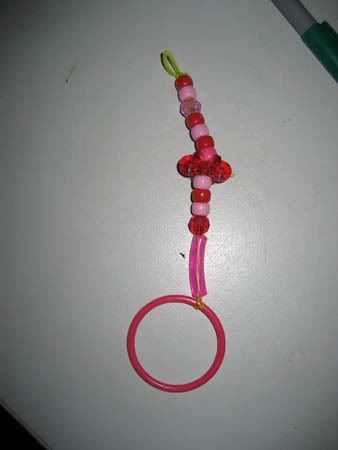
Pretty in pink
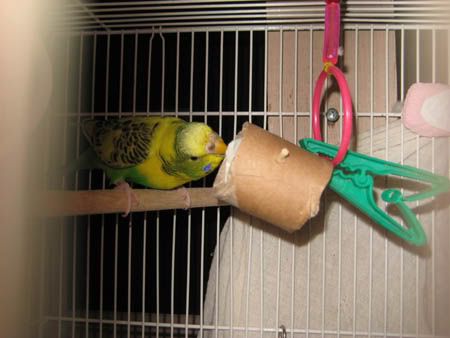
Here it is in action as part of a captive foraging toy.

Over the rainbow

Obviously not a budgie, but he loves this thing - lots of different shapes to get his beak on, and it slides along the wall as he plays with it.
Here are some older, simple ones as well. These were a big hit when they were in.

So nothing flashy but it's effective - it keeps them occupied for a good time, every time something new goes in there. Extremely cheap, fun to make and easy to replace - when one breaks, I gather the beads and make something new (it's also one of the cutest things in the world seeing them run around with a big bead stuffed in their mouth!)
More soon. I'm planning to use a more natural thread, paper, wood and things to shred - more to Milly's taste! :laughter:

-
SW: From what I've read, you add the spoken command after they can do the trick. It's best done with prop tricks (another good reason to do prop tricks first) because the sight of the prop is a visual command. So once they understand the visual command you can add a spoken word before presenting the prop, and they soon associate the word with the sight of the prop. Kind of like a spoken cue for the visual cue. Hope that makes sense...
Interesting side note - parrots seem to respond better to visual commands (eg hand gestures) than spoken commands.
I'm making some slow progress with Squee and fetch. To be more accurate, we're doing a type of basketball game (I saw it on youtube and it was too cute to resist). She has to put a ball in a cup. I will write it up soon and post videos of what it looks like. For now though I'm very pleased with how she's going, as it's a hard step to go from targeting to retrieving. She is now pretty good at putting the ball in the cup going to her left, but misses sometimes, and it really confuses her if I try to make her go to her right. (I think she understands that the ball has to go into the cup, but she hasn't quite grasped that whether it lands in the cup is actually under her control. Like she knows that if she flicks the ball to her left and it lands in the cup she gets a click; but not quite that she can place it there so it will always go in). So we're staying on going left until she can get 10/10. Update soon :glare:
-
NOTE: from now on I will use the shortcut ‘c/t’ to stand for “click and treat”.
1. Getting Started with Squee
Step one: practise with the clicker! I’m a musician so coordination isn’t a problem for me. It is important to be able to click at the precise moment of the desired behaviour. A suggested way to practise clicking at the drop of an object eg every time a ball hits the ground.
Next to work out the type of reward. It’s simple for my budgies since I know what they will practically kill for – sunflowers and millet sprays. Since I’m going to be constantly training I opted for a munch from a millet spray – sunflowers are way too unhealthy to give at such a high rate.
2. Conditioning the clicker
First to teach that the click means food is coming, and not to fear the strange new noise. (Sorry, no videos, I didn’t think to take any at the time. I was a bit too excited about starting and felt like I didn’t have enough hands as it was!)
Steps:
- Click
- Give the treat
- Wait until she’s finished munching and repeat
That was it for the first lesson! After a while, Squee heard the click and ran towards my right hand looking for the millet.
3. The first game: Targeting
Now for the first real lesson. Targeting is a really good first behaviour to teach because it can be shaped to form other behaviours. It’s also good to return to such an easy concept when warming up for other behaviours, or to keep the treat ratio high when they get frustrated or won’t focus.
Targeting means to touch a certain object to get a click. That’s all they have to do. For my ‘target stick’ I used a green pen (as seen from my Captive Foraging thread, they seem to associate green things with food, and new objects in green don’t scare them as much as other colours). So if she touches the end of the pen she gets a click and the millet.
Aim: To have Squee willingly go to touch the target stick

I started in the cage just because she could be more comfortable, it could restrict her movement and make her more focussed on what I wanted. First I had to see how she was going to react to the new object. Squee is naturally inquisitive and will usually come over to have a look. She eyed it cautiously, but didn’t want to touch it (clearly it wasn’t food-shaped). I had to convince her to touch it somehow. I rested the millet on the pen and she came right over. She accidentally bumped the pen with her beak– c/t (click and treat). I did this a few times, always in the same place. Then I made the millet further away out of her reach so I only brought it up to the cage on the click (I was thinking she was a little too focussed on the millet to actually realise what she was doing). She didn’t get it at first so I varied the millet distance – start close, slowly move back, move closer if she didn’t get it. Every bump earned a c/t. At one point she got frustrated at not being able to reach the millet so she bit the pen – c/t. She did it about four times more before she figured out it was the pen that earned the c/t.
Video: Actually, I went back after typing this up to get the videos, Milly (having watched Squee do it) was no longer afraid of the pen and went up to it to see what was going on. An excellent example of ‘rival theory’, where just because another bird is doing it and getting rewards, the other bird will do the same.
http://s8.photobucket.com/albums/a14/Chrysocome/pets/bbf/2008/?action=view¤t=click1.flv
I knew Squee had learnt it because I moved the pen about three centimetres to the left so she had to reach a tiny bit for it. She nipped the pen and got the reward. I repeated this. Then I repeated it on the right, having her each down a bit, then reach up a bit. Then, I made it so she had to actually take a few steps to get it. Then across the cage and on the roof. She followed the target stick consistently and eagerly. Lesson learnt

Video: As you can see Squee well and truly understands targeting. Note that I only reward her for a real grasp of the pen, not a peck.
http://s8.photobucket.com/albums/a14/Chrys...rent=click2.flv
Lesson summary
- Come to the pen
- Bump the pen
- Willingly touch pen
- Reach left to touch pen
- Reach right/down/up to touch pen
- Take two steps to touch pen in any direction, then four steps
- Come across cage to touch pen
- Climb to the roof to touch pen
I'll do this for another day or two. Next lesson: fetch!
- Click
-
Posted ·
Edited by Chrysocome
Chryso the budding avian behaviourist is at it again! Yep, I have another project for my eager little Squee.
This post is a quick introduction to clicker training (with endless thanks to the bird-click group)
What is clicker training?
Clicker training uses an event marker to reward (and therefore reinforce) behaviours we like. Reinforced behaviours are more likely to be repeated. Behaviours we don’t like are ignored, and since there is nothing to reinforce such behaviours, they eventually stop occurring (they are extinguished). A behaviour can also be shaped, which means it is slowly changed by rewarding the small steps towards the desired behaviour.
Common event markers are the noise of a clicker device (but it doesn’t have to be – it can be praise, the click of a pen, two taps on wood, or any other noise), and reinforcers are usually food (which works well for budgies, but others include a head scritch, a favourite toy etc). Trainers use a clicker device because it is cheap, is easily manipulated while holding other props, and makes a consistently repeatable noise at the instant it is clicked. But there is nothing special about the clicker – it is just an event marker. If you can consistently make the same praise word (same tone, length, etc) at the right time, then that works just as well.
What does the click mean?
We are teaching the bird two things –
- The click only occurs when a certain behaviour is performed
- Food is coming after the click
With the motivation of food, the bird repeats the behaviour that earned it a click and therefore receives the reward.
What do I need?
- An event marker – usually a clicker (readily available from Big-W or K-mart)
- A reinforcer – usually the bird’s favourite food
- A bird (of course!) – any age or sex of bird can be taught, some take longer than others but they will all learn eventually
- Your imagination – there are endless props and tricks a bird can learn
Why clicker train?
There is a popular belief that clicker training can only be used for teaching “silly tricks”. While this is a starting point for clicker training, it can be progressed to husbandry, changing problem behaviour, and even medical needs. For example it can be used to help a bird that's deathly afraid of coming out of its cage, or hands, or it won't step up. It can be used to teach a bird not to fear being towelled by a vet, have its wings examined or nails trimmed. It can also be applied to problem behaviours such as biting or screaming.
Some rules for clicker training
- Be very aware of timing – click at the exact time of the behaviour to avoid confusing the bird
- Always treat after a click – even if you did it by accident
- The order of teaching: prop tricks, non prop tricks, more prop tricks, then tackle problem behaviours such as biting. The reason to teach prop tricks first is to stop the bird begging all the time by offering the behaviour eg while it is in the cage or when you don’t have the clicker handy. With prop tricks, they can only perform the trick when you have the prop (and therefore clicker) ready
- Plan your lessons and record results
- Keep lessons short – about 10 minutes. Stop the lesson before the bird loses interest – keep them wanting more, and therefore have them willing to train next time
- Only train when you are feeling enthusiastic and willing. Clicker training can be frustrating at times and your stress can also influence your bird's learning
So I've started with Squee, the brighter and more inquisitive of my birds, and will post my progress here. Stay tuned!
- The click only occurs when a certain behaviour is performed
-
-
Edited by Chrysocome
Ozzie's favourite pastime is being ridiculously cute: Video

Elly - yep, he worked it out pretty fast too, shredded a skewer in about twenty minutes and is already onto the foraging roll that the budgies are using. I'm going to make/buy him more durable foraging toys because his beak is pretty strong and I think it's a little too easy for him to get through paper and cardboard.
-
-
Edited by Chrysocome
Way to go jwancia - keep it up, they'll soon figure it out. Myself, I prefer the paper towel because it rips very easily.
The behaviourist in me is absolutely fascinated. Alongside clicker training my conure, the captive foraging thing is going amazingly. Squee keeps exceeding my expectations, then Milly follows suit.

Munch munch munch - a good sound coming from the budgies' room.
It's fascinating how they learn in different ways. Squee has figured out a lot of the different ways to solve problems by herself. She's naturally inquisitive and will always investigate when I bring new things. Milly is a bit more conservative and apprehensive of new things.
So Milly watches Squee....

Thinks about it...

Then does the same

I also moved the foraging roll to a new, more difficult position.
You want me to do what??

It's quite hard because not only does the log spin on its axis, it also moves vertically when Squee touches it.

The following is a video about showing bits of how Squee worked it out (while Milly watches). After about ten minutes of unsuccessfully going at it from the top, getting more frustrated, she screamed and flapped at it, sulked in the corner for a bit, then went to an easier package on the other side of the cage. She tried again from the top for another five minutes. Another tantrum. She finally went and tackled it from a new angle. Success this time. She spent ten minutes chewing at the log getting the food and making sure all of the paper was in pieces.
http://s8.photobucket.com/albums/a14/Chrysocome/pets/bbf/2008/?action=view¤t=captive.flv
She consistently got it right every time after that.
They're amazing little birds aren't they? Most people underestimate their intelligence but it's plain as day to me. Bird-brained? Hardly!
-
Edited by Chrysocome
Jwancia, I saw that file, it's talking specificially about native wildlife, not exotic animals. But if you sell them regularly it doesn't sound like you need a license. As a pet seller you're more likely to get investigated than a pet owner.
Do you normally ask to sight a license when you sell certain restricted species?
One of the members I pm'd thinks you only need one for a green cheek conure in the ACT, in all other states it's fine.
Edit - MB, I was thinking the same thing. Conures are cateogry 2, just need to prove legal acquisition. That site out there must be wrong.
-
-
-
I know that you require a license to keep some native species of birds in Australia. But does anyone know about exotic birds? I read somewhere that you might require an 'exotic bird license' in some states to keep a conure. But I've googled and searched all over national and state government sites and come up with nothing. Conures are class 2 or 'low interest' birds which are unlikely to be illegaly imported. For these birds you just have to be able to trace it back to a legal import.
So does anyone here own an exotic bird (and lives in Australia) know about this kind of thing?
-
-
Edited by Chrysocome
Jwancia, that was my original plan, but when I picked one up it had glue left where the paper was stuck on. I was a bit worried about it so I avoided it. Instead I used the remainder of a roll of foil (or glad wrap or anything like that). No glue used at all. If you have a type of toilet paper that doesn't leave glue behind it would be okay I think. Or maybe try and take that top layer of paper off if that works. An alternative would be to use a paper or even plastic disposable cup.
So maybe I lied a little about starting next week - I just thought it was way too easy for them to shred the skewer toy and be done in less than an hour. The Foraging Roll v1.0 went in today.


I had to tempt her with a chunk of millet just once, but after that it was simple.
-
-
Thank you

I've just realised that it was already a given that my birds knew what the paper meant. I started today with my conure Oz, and he was ripping up paper looking for food in about ten minutes (but he's quite a food-motivated little guy!). Tomorrow I'll write a 'getting started' post about how I taught him the paper had food in it.
-
Edited by Chrysocome
:question:
Milly and Squee are now busy shredding paper looking for food. They'll also go mad and climb all over the walls calling when they see me coming with paper. This is really great. However, I think they work out how to get to the hanging bits of paper a bit too quickly now. So I've been thinking about how to take it to a new level.
I've come up with a new project which I'll put in place at the end of the week, once they well and truly understand what the paper packages mean. This project should take me another week, maybe two, to get it to the final stage.
A roll for lunch
Phase One

This is an introductory toy. It's to get them used to the cardboard roll and begin to understand this new concept. The package is big and hangs out of the roll, easily accessible. Inside is a 'jackpot' surprise, a big spray of millet, which they both love.

It is held in place with a wooden skewer. The ends hang out a bit so it doesn't roll around much. First I'll clip it to the wall with a green peg. If it still freaks them out I'll cover it lightly with paper. Then I'll make the package smaller and smaller so they have to reach more into the roll. When they get used to it I'll put it on the ground, where it will move from side to side as they try to reach inside.
Phase Two
This is a bit more advanced. The cardboard roll is longer so they actually have to stick their heads in to get to the prize. The skewer is cut short so it rolls around very easily.
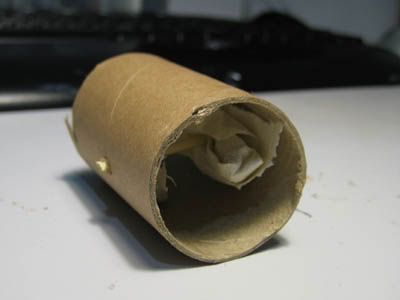

Hopefully this thing rolling all over the place while they work at ripping the paper will make it a bit more difficult for them.
Phase Three
I'll cover it in layers of paper so they have to work for a while to get to the roll itself.
Stay tuned :laughter:
-
Maybe I should change the title - Milly has caught on!
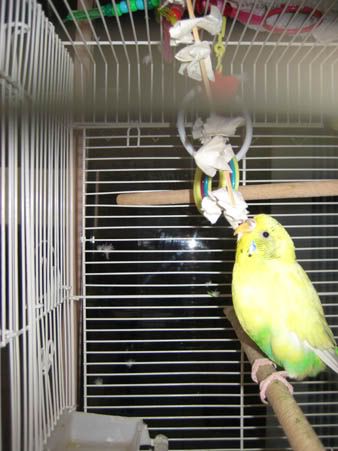
Maybe she just wanted to see what Squee was fussing about.

What I did was pack a wooden skewer with all different foods and some empty ones, and hung it up before I went to uni. It was mostly in pieces on the ground when I got back home
 I hope it took them longer than a few minutes to get through it though!
I hope it took them longer than a few minutes to get through it though!
-
Edited by Chrysocome
Interesting side note - I asked my bird vet about common remedies including citric acid. The evidence is anecdotal (no reliable scientific studies on it), it may help and it doesn't hurt as long as you don't overdo it. It is not a cure, but said to help reduce numbers (during treatment or to reduce it to prevent disease). He said the same principles for lemon/orange juice apply to red cordial, a popular remedy here. Similiar deal for probiotics, which produce lactic acid (and have other benefits). It makes sense to me, because yeasts such as megabacteria prefer basic environments (high pH), so acidic substances might help by lowering the pH.
Of course, it is NOT a cure, it only helps, and if you you don't know what you are 'treating' (eg no one has done a faecal smear or crop flush), you must see an avian vet. Incorrect treatment can be fatal or worsen another problem.
-
Posted ·
Edited by Chrysocome
Sigh. As if I could resist such a gorgeous, sweet little bird?
As discussed in a previous thread... I was thinking about adopting a conure from a person that found he no longer had time for it, so it became a bit nippy. I felt a little too rushed, suddenly taking on a bird and I've been putting off getting a tiel until I graduated. Well, I went there with the thought that I would check it out and decide later. But how could I resist? The owner was also going away for two weeks and needed a bird sitter anyway. He obviously loves this bird to bits. He has also insisted that should I have any doubts, or find that I don't have time either, that he will happily take the bird back and find another home. These two weeks are a sort of 'trial' period but at any time the owner said I could return him. I feel a little bit better knowing this, because I may sometimes have time issues. But I will see what happens.
The owner said to give Ozzie a wing clip. I thought it might help with his biting issues. I've never owned a clipped bird (birds explore their world in 3d - I don't quite like the idea of taking it away from them), however, I thought I would learn and see the difference for myself. I felt a bit sad cutting the gorgeous blue feathers. I'll let them grow back fully next moult.
I am smitten. He loves head scritches, will eat anything I offer him, and will lie on his back happily recieving belly rubs. He has also decided that my hair makes a nice hidey place. He is such a sweetie. I am thinking he is a bit tired and maybe nervous so I will give it a few days before I judge. But right now there is a bird snuggled next to my neck squeaking happily. It is a lovely feeling.
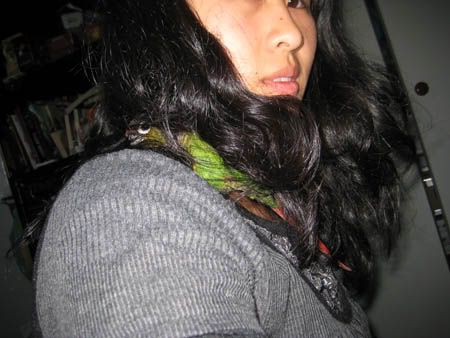
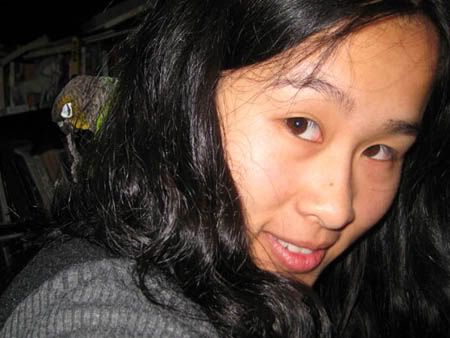








Melbourne Meet Up-
in Off Topic Chatter
You mean 17th and 18th right MB? Is this still going ahead? Because these dates work for me! Either is fine